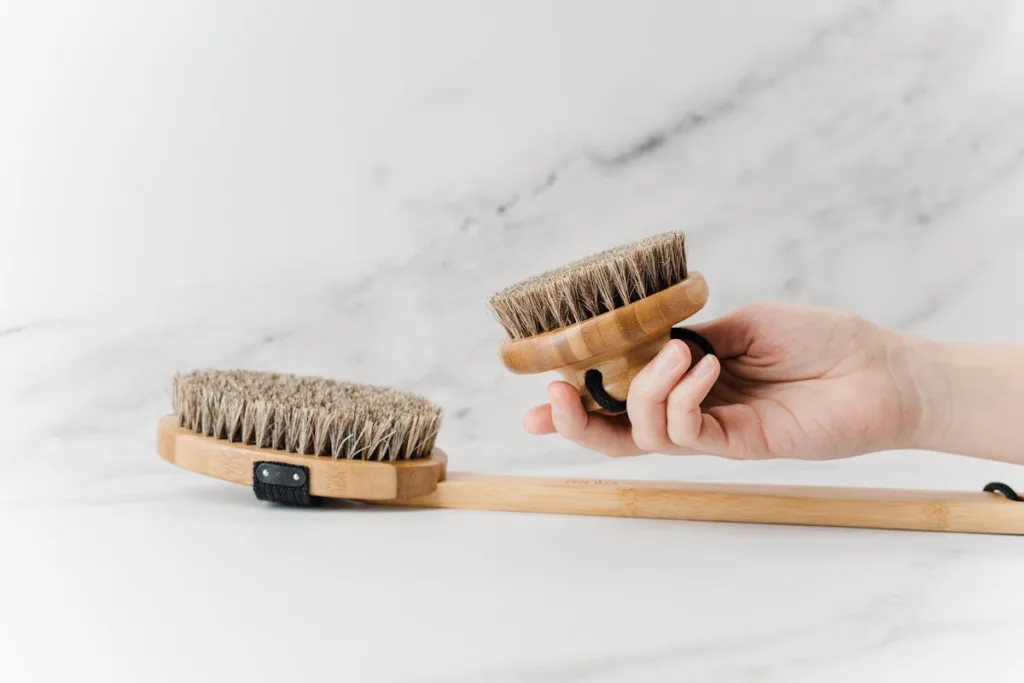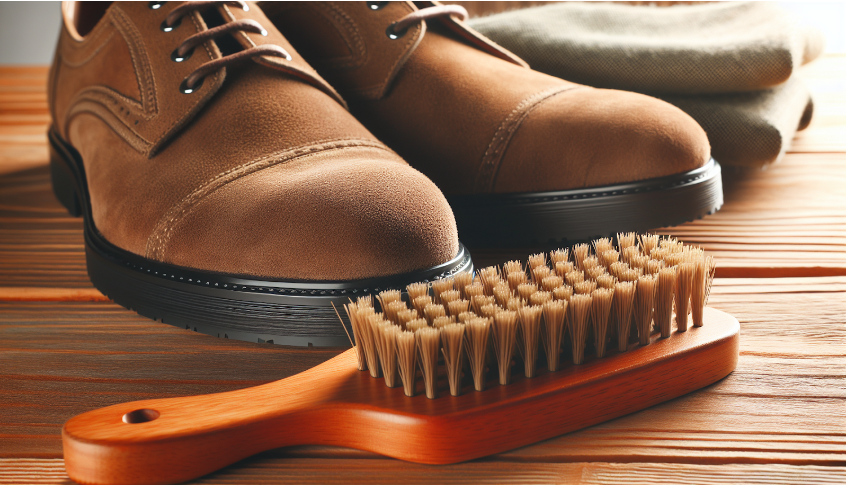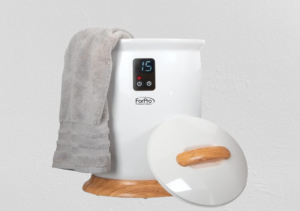Cleaning Suede Shoes: Suede shoes, known for their soft, smooth texture, are crafted from the underside of animal hide, distinguishing them by their luxurious touch and elegant appearance. Unlike nubuck, suede offers a distinctive feel due to the sanded short hairs, making it a preferred material for those seeking style combined with comfort. However, despite their sophistication, suede shoes demand careful maintenance to preserve their appeal, as they are prone to staining and water damage.
This article delves into the art of keeping your suede shoes in pristine condition, highlighting the effectiveness of the right suede shoe brush techniques. From pre-cleaning preparation to drying and brushing strategies, it provides a complete guide on how to maintain the attraction of your suede footwear. Important tips on protecting suede shoes, choosing the best suede shoes brush, and avoiding common mistakes in suede care will ensure your footwear retains its polish for years to come, making it a valuable resource for anyone looking to safeguard their investment in quality suede.
What is suede?
Suede, a type of leather with a unique napped finish, is made from the underside of animal hide, typically from lamb, goat, or calf. This section explores the characteristics, production, and care of suede, providing essential insights for maintaining its quality and appearance.
Features of Suede
Texture and Durability: Suede is celebrated for its soft, velvety texture, achieved by buffing the underside of the leather to create a consistent, short pile. However, this process makes suede less durable and more vulnerable to damage compared to full-grain leather.
Permeability and Maintenance: Highly permeable, suede lacks natural waterproofing, making it prone to stains and water damage. It requires special products and careful handling to maintain its appearance. Products like Saphir Médaille d’Or Gommadin, a sandstone block, are recommended for cleaning suede shoes and maintaining the nap without causing damage.
Production and Alternatives
Historical Context: The production of suede is relatively recent, with the term originating from French gloves made of Swedish leather in the 18th century. Today, China leads in suede production, followed by Europe.
Synthetic Alternatives: Due to ethical concerns and maintenance challenges associated with genuine suede, synthetic alternatives like Ultrasuede have been developed. These are made from polyester microfibers, offering durability, water resistance, and ease of cleaning suede shoes, characteristics that genuine suede lacks.
Cost and Usage
Economic Aspects: Genuine suede fabric typically costs between $30-40 per yard, whereas synthetic versions are more affordable, ranging from $8-$12 per yard.
Applications: Suede is widely used in high-end products such as shoes, jackets, and designer handbags, valued for its luxurious feel and aesthetic appeal. However, its high maintenance requirements and susceptibility to wear necessitate informed care techniques to preserve its quality over time.

Pre-Cleaning Preparation
Before initiating the cleaning suede shoes process, it’s crucial to ensure that your suede shoes are completely dry. To expedite drying, gently blot any excess water with an absorbent cleaning suede shoes cloth and, if necessary, use a hairdryer set on medium heat. Inserting balled-up newspaper inside the shoes can also help absorb residual moisture. This preparation prevents water stains and prepares the suede for a more effective cleaning suede shoes.
Initial Dirt Removal
Remove Laces and Insoles: Start by taking out laces and insoles to ensure thorough cleaning suede shoes and to prevent water from getting trapped under them during the cleaning process.
Brush Off Superficial Dirt: Using a suede brush, gently brush away the surface dirt from your shoes. If the dirt is wet or muddy, allow it to dry completely before brushing. This helps in avoiding pushing the dirt deeper into the suede fibers.
Spot Testing Cleaning Methods: Before applying any cleaning solution, always test it on a small, inconspicuous area of the suede to ensure it doesn’t alter the color or texture.
Preparing Cleaning Solutions and Tools
Cleaning Kit Essentials: Gather your cleaning tools and solutions including a soft bristle brush, medium bristle brush, stiff bristle brush, microfiber towel, and a bowl of water with a mild cleaning solution (two squirts of cleaner recommended).
Apply Protectant Sprays: Before the first wear and after each clean, treat your suede shoes with a protectant spray like Scotchgard Protector or Kiwi Rain and Stain Protector to shield against water and stains. For a more natural option, choose sprays without nano or silicone-based ingredients.
Using these pre-cleaning preparation steps ensures that your suede shoes are set up for a successful cleaning suede shoes process, maintaining their quality and extending their life.
Removing Stains and Spots
When addressing stains on suede shoes, the right techniques and tools are crucial to maintain the material’s integrity while effectively removing unsightly marks. Here’s how to tackle various types of stains:
General Stain Removal Techniques
Rubber and Erasers: For persistent stains or scuffs, a suede rubber or pencil eraser can be gently used to rub out the marks. Apply moderate pressure but be careful not to damage the fabric.
Vinegar and Alcohol Solutions: Dab a washcloth or flannel moistened with white vinegar or rubbing alcohol on tougher stains. This might darken the suede temporarily, but it will revert to its original color upon drying.
Baking Soda and Cornstarch for Oil: Apply baking soda or cornstarch on oily stains and leave it overnight. Brush off the residue gently with a suede brush the next day.
Specialized Techniques for Stubborn Stains
Water Stains: Lightly spray the stained area with water, then brush gently with a suede brush. Use a paper towel to blot any excess moisture and let it air dry.
Old or Set Stains: For stains that have been set, use a toothbrush or suede eraser to gently scrub the area. If the nap is matted, steaming lightly over boiling water can help lift the fibers.
Commercial Cleaners: For very stubborn stains, products like Saphir Médaille d’Or Gommadin for grease and Omninettoyant for refreshing color can be effective.
Preventive Measures and Regular Care
Immediate Action: Address spills and stains immediately to prevent them from setting into the suede. Blotting rather than rubbing can effectively reduce the impact of the stain.
Professional Help: For severe stains or when unsure about the cleaning method, consulting a professional suede cleaner is advisable to avoid irreversible damage.
Regular Maintenance: Regularly brushing your suede shoes with a suitable suede brush will help maintain their appearance and prevent dirt buildup.
By following these targeted approaches, you can effectively manage stains on your suede shoes, ensuring they remain in pristine condition for longer.
Drying and Brushing Techniques
Optimal Brushing Techniques
To maintain the luxurious texture of suede shoes, it is essential to employ the correct brushing techniques. Begin by selecting the appropriate type of brush; a natural bristle brush is often recommended for its flexibility and gentleness on the suede’s delicate fibers.
Directional Brushing: Always brush the suede in one direction. Start from the heel and move towards the toe to enhance the nap without causing damage. This method helps in lifting the dirt out rather than pushing it deeper into the material.
Pressure Considerations: Apply a moderate amount of pressure during brushing. Excessive force can scuff the suede, while too light a touch might not be effective in removing all the dirt. Finding a balance is key to effective cleaning suede shoes without damaging the shoes.
Daily Maintenance and Care
Regular brushing is crucial in extending the lifespan and maintaining the appearance of suede shoes.
Daily Brushing: To prevent dirt buildup and to keep the suede looking fresh, brush the shoes gently every day with a suede brush or a clean, dry toothbrush.
Post-Wet Care: If the shoes get wet, allow them to air dry naturally and insert shoe trees to help maintain their shape. Once dry, use a suede brush to gently lift the nap and remove any residual dirt.
Choosing the Right Brush
Understanding the different types of suede shoe brushes can aid in selecting the best tool for your shoes.
Natural Bristle Brushes: Ideal for regular use, as they are soft yet effective.
Combination Brushes: These suede shoe brushes offer different bristle types on each side, useful for varying degrees of dirt.
Crepe Brushes: Made from natural rubber, crepe brushes are particularly good at removing stubborn marks without damaging the suede.
Regular use of these techniques will ensure your suede shoes remain clean, well-maintained, and stylish for years to come. Learn more about “Best Suede Shoe Brush” here.
Protecting Suede Shoes
To effectively protect suede shoes and maintain their pristine condition, it’s crucial to follow specific care techniques. Here are detailed steps and considerations for safeguarding your suede footwear:
Application of Protective Sprays
Prevent Water Damage: Regularly apply a waterproof spray such as Clarks’ Protector product, which helps to resist water penetration and guard against stains. For best results, reapply the spray once every season or after cleaning.
Use of Suede Protector Spray: After cleaning, apply a suede protector spray to create a barrier that repels liquids and prevents stains from setting in. This is especially recommended for colored suede to maintain its vibrancy.
Storage and Handling
Proper Storage: Always store suede shoes in a cool, dry place away from direct sunlight and heat sources to prevent fading and drying out. Use shoe trees to maintain shape and insert silica gel packs to absorb excess moisture.
Avoid Wet Conditions: Be cautious and avoid wearing suede shoes in rainy or snowy conditions. If caught in unexpected weather, allow shoes to dry naturally away from heat and then brush gently to restore the nap.
Regular Maintenance
Conditioning: Treat unfinished suede regularly with a suede conditioner to enhance its suppleness and resistance to scratches and marks.
Handling Stains: Address stains or spills immediately by blotting—never rubbing—and consult a professional cleaner for severe stains to avoid permanent damage.
Utilizing these protective measures will significantly extend the life and appearance of your suede shoes, ensuring they remain a valuable part of your wardrobe.
How to Choose the Right Suede Shoe Brush
Selecting the appropriate suede shoe brush is essential for maintaining the appearance and longevity of your suede shoes. Here’s a guide to help you choose the right brush based on the type of cleaning needed and the condition of the suede.
Horsehair Brush: Ideal for regular maintenance, this brush is gentle and effective for removing surface dirt and maintaining the nap of the suede.
Brass Suede Brush: Best used for deeper cleaning, this brush helps in removing stubborn dirt and scuffs and is effective in restoring the nap of older suede shoes.
Crepe Brush: Made from natural rubber, this brush is excellent for detailed cleaning and reviving the nap, making the suede look fresh and new.
Recommended Usage
Daily Cleaning: Use a horsehair brush to lightly brush away dirt and dust accumulated throughout the day. This keeps the suede looking clean and prevents dirt from embedding deeper into the material.
Post-Stain Treatment: After treating stains with a suede eraser or cleaner, use a crepe brush to restore the texture and nap of the suede.
Intensive Cleaning: For shoes that have not been cleaned for a while or have stubborn dirt, use the brass suede brush carefully to rejuvenate the suede without damaging it.
Care and Maintenance Tips
Separate Brushes: Always use separate brushes for suede and smooth leather to avoid transferring polish or wax.
Regular Brushing: Regular use of a crepe brush can help maintain the suede’s nap and appearance. Finish off any cleaning session with a horsehair brush to remove any leftover cleaning residue and to fluff up the suede.
By understanding the different types of brushes and their specific uses, you can effectively maintain your suede shoes, ensuring they look their best for years to come.
Mistakes to Avoid When Brushing Suede Shoes
When maintaining and cleaning suede shoes, it’s critical to handle the suede shoe brush correctly to avoid personal injury. A common mistake that can occur during the brushing process is not being mindful of one’s fingers, which may lead to accidental scrapes or discomfort. Here are some tips to ensure the safe handling of the brush:
Safe Brushing Practices
Hold the Brush Properly: Grip the handle of the brush firmly but comfortably to maintain control and stability while brushing.
Brush Away from Your Body: Always brush in a direction away from your body. This prevents the brush from slipping and coming into contact with your skin.
Use Gentle Strokes: Apply moderate pressure with gentle strokes to clean the suede effectively without risking the brush slipping or causing injury.
By following these simple guidelines, one can avoid common mishaps and ensure both the safety of the individual and the integrity of the suede shoes.
Conclusion
Throughout this article, we explored the comprehensive care and maintenance necessary to preserve the elegance and appeal of suede shoes. We delved into various techniques for cleaning suede shoes, protecting, and storing suede footwear, emphasizing the importance of selecting the right tools and adopting preventive measures against common pitfalls. Our journey through the nuances of suede care underlines the material’s luxurious yet demanding nature, requiring informed and delicate handling to maintain its distinctive texture and appearance over time.
As we conclude, it’s evident that maintaining the allure of suede shoes is an art that blends meticulous care with knowledgeable techniques. By adhering to the practices and recommendations discussed, enthusiasts can significantly extend the lifespan and beauty of their suede collections. Let this guide serve as a blueprint for navigating the challenges of suede maintenance, ensuring that your footwear remains a testament to timeless elegance and careful preservation.
FAQs
1. What type of brush is ideal for cleaning suede shoes?
The crepe brush is considered the best for suede shoes due to its soft, natural crepe material and sticky texture. This combination is effective for cleaning delicate leather. It is most effective when the crepe rubber is at room temperature, allowing it to remain soft and gentle on the suede.
2. How to brush suede shoes? or How to clean brushed suede shoes?
To effectively clean suede shoes, follow these five steps:
- Begin by gently brushing away any surface dirt and grit using a suede brush.
- Use a rubber brush to attempt to remove any persistent marks.
- For stubborn stains, apply a small amount of white vinegar or rubbing alcohol.
- If dealing with oil or grease stains, apply baking soda to absorb and lift the stain.
- Always finish by applying a suede protector to safeguard the shoes.
3. What is the correct technique for brushing suede?
Always brush suede in the direction of the nap to prevent damage. If there are stains, use a suede eraser or a diluted solution of water and white vinegar for spot cleaning. Gently apply the solution using a clean cloth.
4.How to clean suede shoes with suede brush?
Suede should be brushed after each use to maintain its appearance and texture. Using a suede cleaning brush regularly helps remove dirt and re-fluff the suede pile, keeping your shoes looking their best.




